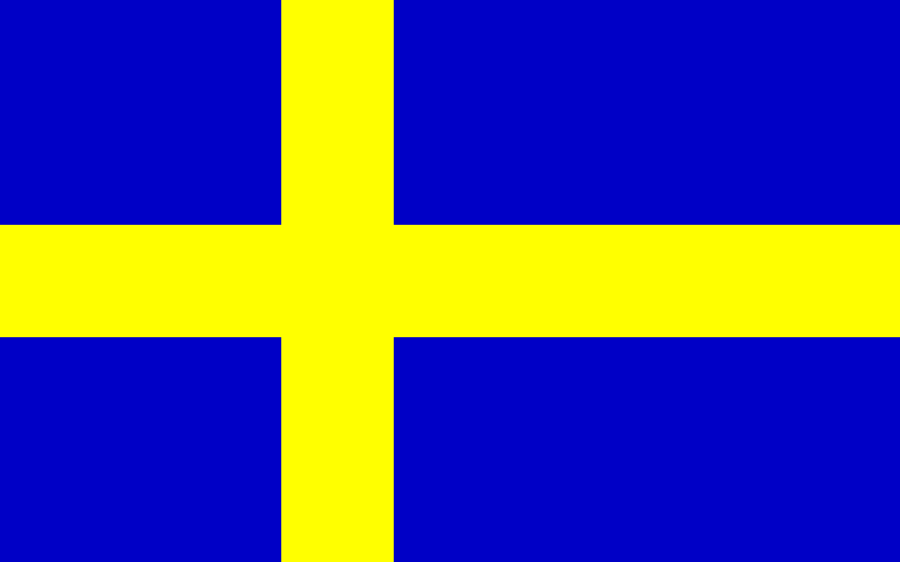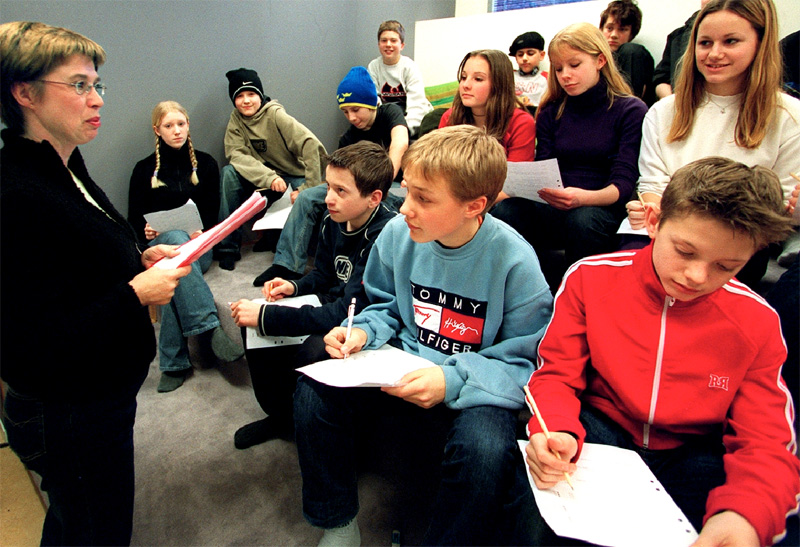

A study nurse visiting one of the school classes in Linköping during ISAAC Phase III
National Publications
The following publications used ISAAC data from Sweden:
- Annus T, Björkstén B, Mai XM, Nilsson L, Riikjärv MA, Sandin A, Bråbäck L. Wheezing in relation to atopy and environmental factors in Estonian and Swedish schoolchildren. Clin Exp Allergy 2003; 31(12): 1846-53.
- Bråbäck L, Kjellman NI, Sandin A, Björkstén B. Atopy among schoolchildren in northern and southern Sweden in relation to pet ownership and early life events. Pediatr Allergy Immunol. 2001;12:4-10.
- Mai X-M, Nilsson L, Kjellman N-IM, Björkstén B. Hypertonic saline challenge tests in the diagnosis of bronchial hyperresponsiveness and asthma in children. Pediatr Allergy Immunol 2002; 13(5): 361-7.
- Mai X-M, Nilsson L, Bråbäck L, Sandin A, Kjellman N-IM, Björkstén B. High body mass index, asthma and allergy in Swedish schoolchildren participating in the International Study of Asthma and Allergies in Childhood: Phase II. Acta Paediatr 2003; 92(10): 1144-48.
- Sandin A, Annus T, Björkstén B, Nilsson L, Riikjärv MA, van Hage-Hamsten M, Bråbäck L. Prevalence of self-reported food allergy and IgE antibodies to food allergens in Swedish and Estonian schoolchildren. Eur J Clin Nutr.2005 Mar;59(3):399-403.
Sweden, Northern and Eastern Europe
| Centres: | Phase: | PI: | Age Groups |
|---|---|---|---|
| Linköping | 1 | Professor N-I Max Kjellman | 13-14, 6-7 |
| Stockholm/Uppsala | 1 | Dr Tony Foucard | 13-14, 6-7 |
| Linköping | 2 | Dr Lennart Bråbäck | 10-11 |
| Östersund | 2 | Dr Lennart Bråbäck | 10-11 |
| Linköping | 3 | Dr Hartmut Vogt | 13-14, 6-7 |
Personnel
Dr Lennart Nilsson
Department of Molecular and Clinical Medicine
Division of Pediatrics
University Hospital, Linköping
Sweden
Roles:
- National Coordinator for Sweden
National Coordinator for Sweden Phase One and Three
Dr Lennart Bråbäck
Sundsvall Hospital
Mid Sweden Research and Development Centre
Sweden
Roles:
- National Coordinator for Sweden
- Phase Two Principal Investigator for Linköping, Östersund
- y
National Coordinator for Sweden Phase Two
Study sites in Sweden were Linköping in phase I, II and III and Östersund in phase II Linköping in Southern Sweden (latitude 588) is the fifth largest city in Sweden and is currently undergoing expansion with a university and several large sites of industry. At the time of ISAAC Phase II in 1997, the population was 132,089 (24% of whom were below 20 years of age). Östersund is an administrative center in Northern Sweden (latitude 618) with sparsely populated surroundings. In 1997, the total population in Östersund was 59,188 (23 % of whom were below 20 years of age).
As a member of the international steering committee and the regional coordinator in Eastern Europe, professor Bengt Björkstén had an important role as a promoter of the ISAAC studies in Sweden. The ISAAC study phase II was carried out in close cooperation with the study centres in Estonia and the field workers were trained together in skin prick test technique and bronchial hyperreactivity tests.
In phase II, clusters of children were randomly selected in each centre for the study, using schools as sampling units. In Linköping, the survey involved 15 schools and in Östersund all schools were selected due to the lower population. All 10-11 years old children (forms 4 and 5) were invited to participate in skin prick tests and parental questionnaires. Information on anthropometric measures at birth and pre- and perinatal exposures were collected from the medical birth registry. The local mass medias paid a great deal of attention to the study, particularly in Östersund. The participation rates in the questionnaire study were 82% in Linköping and 86% in Östersund. All children with a history of wheeze in the past 12 months as reported in the parental questionnaires and a random sample of non-wheezing children from the original cohorts were invited to a case-control study, which included parental questionnaire, examination for flexural dermatitis and bronchial challenge with hypertonic saline.
The sensitivity of hypertonic saline challenge test to detect asthma ever, current asthma and current atopic asthma was 62, 61 and 83%, and the specificity was 83, 81 and 60%, respectively. Also, the degree of bronchial hyperresponsiveness increased with the number of wheezy episodes. It was concluded that hypertonic saline provocation test is useful as a tool to detect asthma in epidemiological studies in children. Xiao-Mei Mai, a talented researcher, now working in Norway, wrote her thesis using data from ISAAC phase II and Professor Ulrich Wahn, Humboldt University Berlin, was her opponent.
For ISAAC III paediatrician Hartmut Vogt and the study nurses Kicki Helander and Ing-Marie Sandberg were at all schools in the municipality of Linköping evaluating children for asthma and allergy. When watching different clips of the ISAAC video questionnaire, many of the children first laughed quietly at the children in the film clips but after a while some of them seemed to become aware that this was their own problems that were shown. In almost every school, several children stayed afterwards and discussed their health problems with our research group/staff and talked about the possibilities they had, to get rid of their symptoms. This was really a sudden insight for many of the children (and us). The photo, taken by the local newspaper, shows some children and one of our research nurses.
When comparing the results from ISAAC III with ISAAC I we could, for the first time, see a decrease in the incidence of asthma symptoms in Sweden. The 12-month prevalence of wheezing in Linköping decreased from 11.2% to 9.7% among 13-14 years old children.
